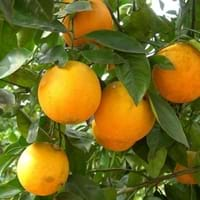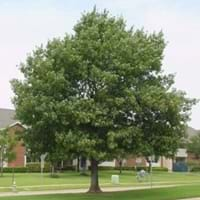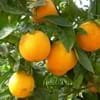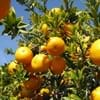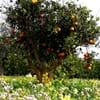Life Span
Perennial
Perennial
Origin
Southeastern Asia, India, China
Northeastern United States, Mid-Atlantic United States, Southeastern United States, North-Central United States, Central United States, South-Central United States, Canada
Types
Louisiana sweet orange is a type of sweet orange which is a type of oranges
Ashford Oak, Chase Creek Red Oak, Shera-Blair Red Oak
Number of Varieties
Not Available
Habitat
Dry areas, Warmer regions
Sandy areas, Upland, Wooded slopes, Woodlands
USDA Hardiness Zone
9-11
3-9
Sunset Zone
H1, H2, 8, 9, 12, 13, 14, 15, 16, 17, 18, 19, 20, 21, 22, 23, 24
1a, 1b, 2a, 2b, 3a, 3b, 4, 5, 6, 7, 8, 9, 10, 11, 12, 14, 15, 16, 17, 18, 19, 20, 21, 22, 23, 24
Habit
Oval or Rounded
Oval or Rounded
Flower Color
White, Red, Purple
Yellow green
Flower Color Modifier
Bicolor
Bicolor
Fruit Color
Green, Orange
Brown, Sienna
Leaf Color in Spring
Dark Green
Green, Dark Green
Leaf Color in Summer
Dark Green
Green, Dark Green
Leaf Color in Fall
Dark Green
Red, Brown, Dark Red, Bronze
Leaf Color in Winter
Light Green
Not Available
Leaf Shape
Ovate
Maple shaped
Plant Season
Spring, Summer, Fall, Winter
Spring, Summer, Fall
Sunlight
Full Sun
Full Sun, Partial Sun, Partial shade, Full Shade
Type of Soil
Loam, Sand
Clay, Loam, Sand
The pH of Soil
Acidic, Neutral, Alkaline
Acidic, Neutral
Soil Drainage
Well drained
Well drained
Bloom Time
Early Spring, Spring, Late Winter
Spring
Tolerances
Drought
Pollution, Drought, Salt
Where to Plant?
Ground
Ground
How to Plant?
Seedlings
Seedlings, Stem Planting
Plant Maintenance
High
Medium
Watering Requirements
Reduce watering during fall, Requires regular watering
Do Not over Water
In Summer
Average Water, Ample Water
Lots of watering
In Spring
Adequately
Moderate
In Winter
Alternate Days
Average Water
Soil pH
Acidic, Neutral, Alkaline
Acidic, Neutral
Soil Type
Loam, Sand
Clay, Loam, Sand
Soil Drainage Capacity
Well drained
Well drained
Sun Exposure
Full Sun
Full Sun, Partial Sun, Partial shade, Full Shade
Pruning
Prune to stimulate growth, Remove dead leaves
Remove damaged leaves, Remove dead branches, Remove dead leaves
Fertilizers
fertilize every 2-3 weeks while growing, fertilize in growing season, fertilize in spring
Don't fertilize within a year of planting
Pests and Diseases
Aphids, Caterpillars, Mealybugs, Mites, Rust, Scale, Spider mites, Whiteflies
Borers, Caterpillars, Galls, Moth, Red blotch, Scale
Plant Tolerance
Drought
Drought, Pollution, Salt
Flowers
Showy
Insignificant
Flower Petal Number
Single
Not Available
Fragrant Bark/Stem
Yes
No
Foliage Texture
Medium
Coarse
Foliage Sheen
Glossy
Matte
Attracts
Birds, Butterflies
Birds, Butterflies
Allergy
Not Available
Not Available
Aesthetic Uses
Showy Purposes
Showy Purposes
Beauty Benefits
Improve hair condition, Improve skin condition, Making cosmetics, Removes dandruff
Not Available
Environmental Uses
Not Available
Air purification
Medicinal Uses
Vitamin C
Not Available
Part of Plant Used
Fruits
Whole plant
Other Uses
Used As Food
Used as Ornamental plant
Used As Indoor Plant
No
No
Used As Outdoor Plant
Yes
Yes
Garden Design
Container, Edible, Feature Plant, Fruit / Fruit Tree, Hedges, Screening / Wind Break, Topiary / Bonsai / Espalier, Tropical
Shade Trees, Street Trees
Botanical Name
CITRUS sinensis 'Louisiana Sweet'
QUERCUS rubra
Common Name
Louisiana Sweet Orange, Orange
Northern Red Oak
In Hindi
Lousiana नारंगी
उत्तरी लाल ओक
In German
Lousiana Orange
Roteiche
In French
Lousiana d'orange
chêne rouge
In Spanish
Lousiana naranja
el roble rojo del norte
In Greek
Lousiana πορτοκαλί
βόρειο κόκκινο δρυς
In Portuguese
Lousiana laranja
carvalho vermelho do norte
In Polish
Lousiana pomarańczowy
dąb czerwony
In Latin
louisiana aurantiaco
Quercus rubra
Phylum
Not Available
Magnoliophyta
Class
Not Available
Magnoliopsida
Clade
Not Available
Angiosperms, Eudicots, Rosids
Tribe
Not Available
Not Available
Subfamily
Not Available
Not Available
Number of Species
Not Available
Not Available
Importance of Louisiana Orange and Northern Red Oak
Want to have the most appropriate plant for your garden? You might want to know the importance of Louisiana Orange and Northern Red Oak. Basically, these two plants vary in many aspects. Compare Louisiana Orange and Northern Red Oak as they differ in many characteristics such as their life, care, benefits, facts, etc. Every gardener must at least have the slightest clue about the plants he wants to plant in his garden. Compare their benefits, which differ in many ways like facts and uses. The medicinal use of Louisiana Orange is Vitamin C whereas of Northern Red Oak is Not Available. Louisiana Orange has beauty benefits as follows: Improve hair condition, Improve skin condition, Making cosmetics and Removes dandruff while Northern Red Oak has beauty benefits as follows: Improve hair condition, Improve skin condition, Making cosmetics and Removes dandruff.
Compare Facts of Louisiana Orange vs Northern Red Oak
How to choose the best garden plant for your garden depending upon its facts? Here garden plant comparison will help you to solve this query. Compare the facts of Louisiana Orange vs Northern Red Oak and know which one to choose. As garden plants have benefits and other uses, allergy is also a major drawback of plants for some people. Allergic reactions of Louisiana Orange are Not Available whereas of Northern Red Oak have Not Available respectively. Having a fruit bearing plant in your garden can be a plus point of your garden. Louisiana Orange has showy fruits and Northern Red Oak has no showy fruits. Also Louisiana Orange is not flowering and Northern Red Oak is not flowering . You can compare Louisiana Orange and Northern Red Oak facts and facts of other plants too.
